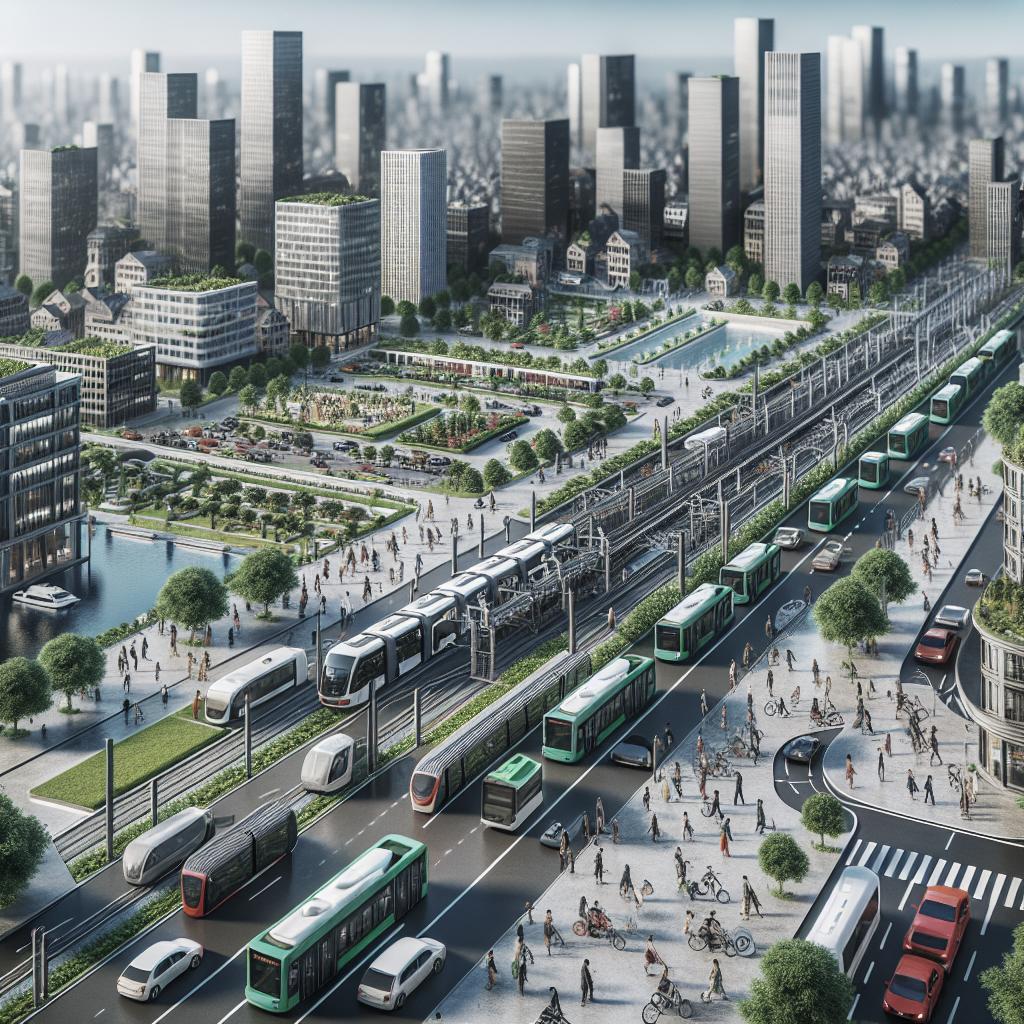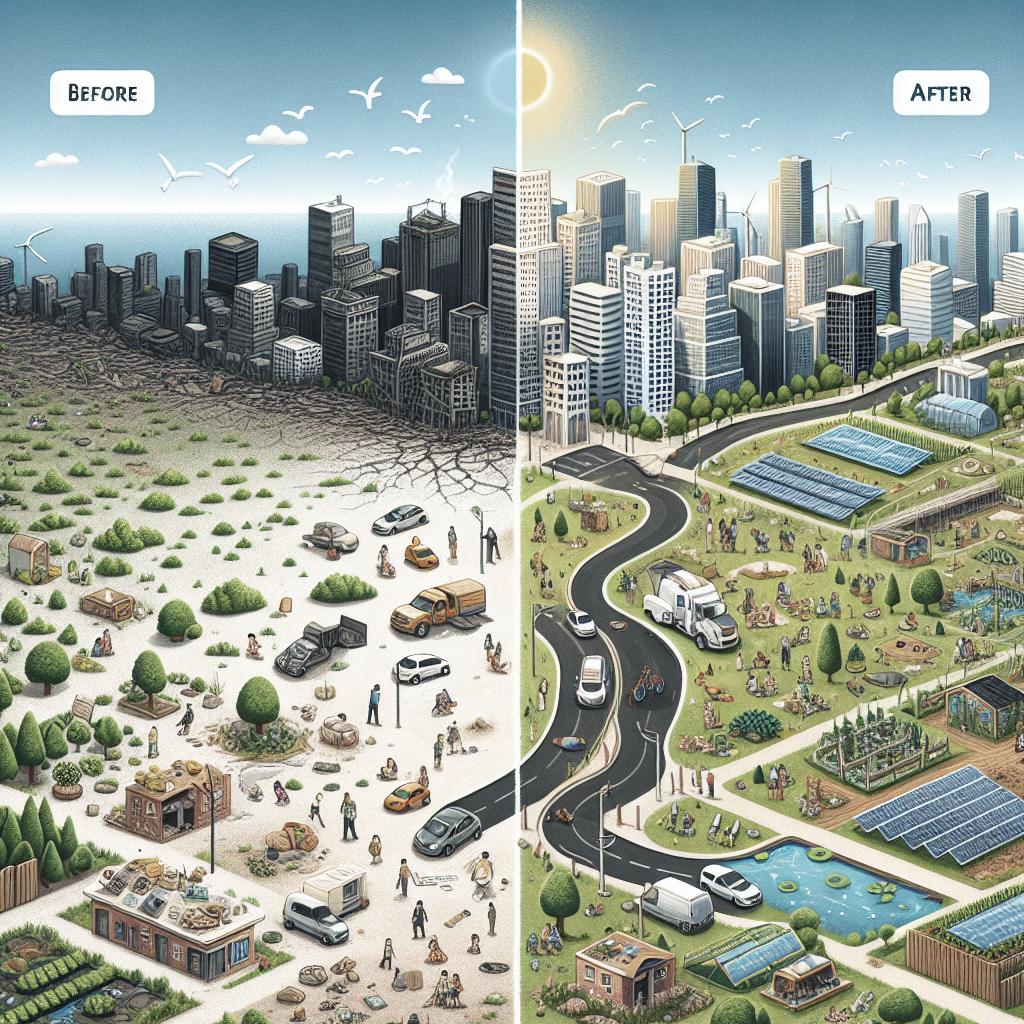<>
“`
Introduction
Public transportation plays a pivotal role in the development of urban areas, influencing various aspects of urban planning, from infrastructure design to sustainable development. This blog post explores how public transportation impacts urban planning, addressing related topics such as Transit-Oriented Development, Sustainable Transportation Planning, Smart and Sustainable Street Design, and Parking and Curbside Management. Additionally, we’ll discuss the technical assistance involved in planning and consider opinions from different stakeholders. By understanding these connections, we can appreciate the importance of integrating efficient public transportation systems into urban planning processes to create more livable and sustainable cities.
Background
Urban planning involves the strategic development and management of land use, infrastructural design, and environmental stewardship to create functional and sustainable urban areas. Public transportation is an essential element of urban planning that can significantly impact the efficiency, accessibility, and sustainability of cities. By influencing how people move within urban spaces, public transportation informs decisions regarding land use, zoning, and infrastructure investment. Historically, cities with well-developed public transportation systems have demonstrated higher levels of connectivity and economic vitality. Public transportation reduces the reliance on private vehicles, decreasing traffic congestion and carbon emissions. Moreover, it encourages the integration of diverse land uses, promoting walkable neighborhoods and reducing urban sprawl.
Related Topics
Transit-Oriented Development
Transit-Oriented Development (TOD) is a planning approach that focuses on creating high-density, mixed-use communities centered around transportation hubs. These developments aim to provide residents with easy access to public transit, reducing the necessity of car travel and fostering a more sustainable, urban lifestyle. TOD initiatives often include amenities such as retail shops, schools, parks, and office spaces within walking distance of transit stations. The benefits of TOD are multifaceted. By reducing the dependence on private vehicles, TOD can help alleviate traffic congestion and lower greenhouse gas emissions. Moreover, it promotes healthy living by encouraging walking and cycling. The economic advantages include increased property values and commercial activity around transit hubs, generating revenue for the local economy and bolstering public funding for further transportation and infrastructure improvements.
Sustainable Transportation Planning
Sustainable transportation planning integrates environmental, social, and economic considerations to develop a transportation system that meets present and future needs. Public transportation is a cornerstone of sustainable planning, as it offers a greener alternative to private cars, helping to reduce the urban carbon footprint. Innovative technologies and policies are increasingly being adopted to enhance public transportation’s sustainability. For example, the use of electric buses and trains can significantly cut down on emissions. Policies such as congestion pricing and carpool incentives also encourage the use of public transportation over individual car journeys. Sustainable transportation planning advocates for the inclusion of cycling lanes and pedestrian paths, making it easier for residents to choose active modes of transport for their daily commutes.
Smart and Sustainable Street Design
Smart and sustainable street design aims to create streets that are safe, efficient, and accessible for all users, including pedestrians, cyclists, and drivers. Public transportation facilities play a critical role in this aspect by integrating bus lanes, tram tracks, and subway entrances into urban streetscapes. Incorporating smart technology enables real-time data collection and adaptive traffic management. For example, traffic lights can be synchronized based on bus schedules to prioritize public transportation, reducing delays and improving service efficiency. Additionally, bus stops and train stations are designed with accessibility in mind, featuring ramps, tactile paving, and real-time arrival information displays to assist all commuters, including those with disabilities.
Parking and Curbside Management
Efficient parking and curbside management are essential for minimizing traffic congestion and ensuring smooth traffic flow within urban areas. Public transportation significantly impacts parking policies by reducing the demand for parking spaces. Instead of building extensive parking areas in the city center, urban planners can allocate more space for pedestrian zones, parks, and commercial activities. Curbside management involves orchestrating the loading and unloading zones, ride-hailing pick-up and drop-off points, and bus stops to minimize disruptions. Technology-driven solutions like smart parking meters and real-time curb usage data can optimize the distribution of curbside resources, making it easier for public transportation vehicles to move freely and serve riders effectively.
Technical Assistance
Providing technical assistance is pivotal for the successful integration of public transportation into urban planning. This involves employing experts in transportation engineering, urban design, and environmental science to conduct studies, model potential impacts, and develop appropriate strategies for public transportation systems. Technical assistance encompasses data collection and analysis to understand travel patterns and forecast future needs. Geographic Information Systems (GIS), traffic simulation models, and other planning tools help urban planners visualize various scenarios and make informed decisions. Additionally, partnerships with academic institutions, private firms, and government agencies can bring in valuable expertise and resources to optimize public transportation planning efforts.
Comments
What is your opinion on the…
The importance of public transportation in urban planning is a topic of diverse opinions. Some stakeholders might prioritize the economic growth brought by improved accessibility and increased property values, while others might emphasize environmental benefits or social equity. It’s crucial to gather and consider opinions from different community members, including residents, business owners, and local government officials, to create a holistic and inclusive transportation plan.
Add new comment
We invite you to add your comments and share your views on how public transportation impacts urban planning. Whether you have personal experiences, observations, or innovative ideas, your input can contribute to a vibrant discussion that fosters a deeper understanding of this critical topic.
| Topic | Key Points |
|---|---|
| Background | Urban planning and public transportation interconnectedness; benefits include reduced congestion, emissions, and urban sprawl. |
| Transit-Oriented Development | Focuses on high-density, mixed-use developments near transit; promotes walking, reduces car dependence. |
| Sustainable Transportation Planning | Integrates environmental, social, and economic considerations; emphasizes use of clean technologies and policies promoting public transport. |
| Smart and Sustainable Street Design | Safe, efficient, and inclusive streets; use of smart technology for traffic management and accessibility improvements. |
| Parking and Curbside Management | Reduces need for parking, optimizes curbside usage for minimal disruptions and efficient public transport operations. |
| Technical Assistance | Involves experts in planning, data analysis, and partnerships to optimize public transportation integration. |
“`


